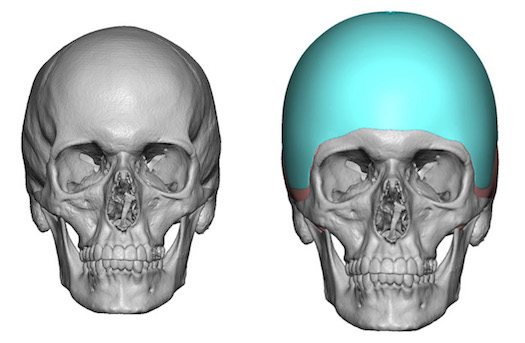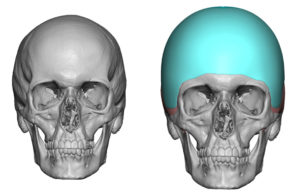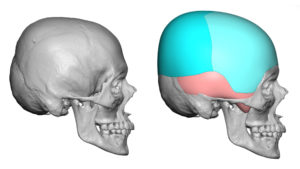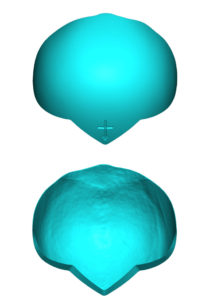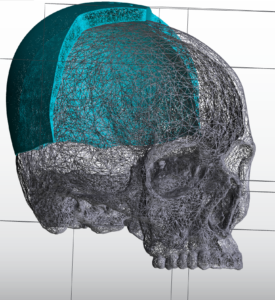Background: Head size is typically determined by a circumferential measurement taken just above the ears. In adults this can be anywhere from 55cms (small) to 60cms which would be considered large. Gender differences also expectedly exists with men’s head size being about 10% bigger than females in average. (men = 56 – 60cms, women = 53 to 55 cms) While this is an effective approach for determining hat or helmet sizes, it is a less effective determinant than how a patient perceives their own head size.
My observation is that when a patient thinks their head is too small it usually is when compared to the rest of their body or even the face. The circumferential measurement may be in the low normal or below the normal range for their gender, but where is the head is really small is above this classical measurement line. The slope of the head at the temporal, forehead or occipital area can be more inwardly inclined which make the head look really small. This is best appreciated in a 3D CT scan which sees beyond the overlying hair and scalp.
Making the head bigger requires an augmentative approach for which only a custom skull implant can create an overall enlargement. Such a head enlargement requires the implant to extend beyond just the bone surface of the front, top and back of the head and lie one top of the temporal muscle fascia on the side of the head. This type of implant design looks very similar to a helmet. Putting in such a skull implant that covers a large surface area requires the overlying scalp to stretch and accommodate it. To which there are limits which must be considered in the implant design.
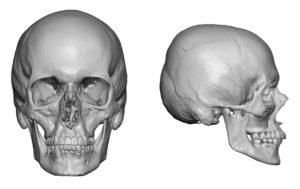

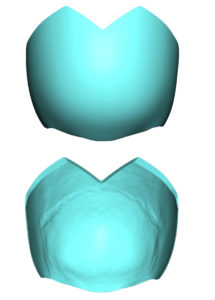
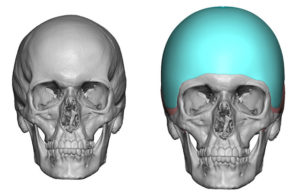
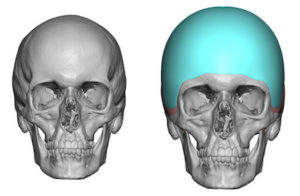

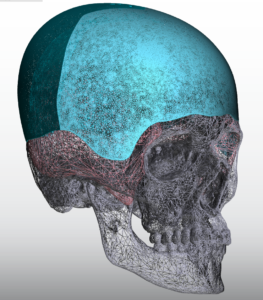
Case Highlights:
1) The perception of head size is determined more than just by a circumferential measurement alone.
2) Increasing overall head size and shape can be done by a custom skull implant that covers most of the skull’s surface.
3) To keep the scalp scar as small as possible, the custom skull implant can be designed in two pieces for placement.
Dr. Barry Eppley
Indianapolis, Indiana

